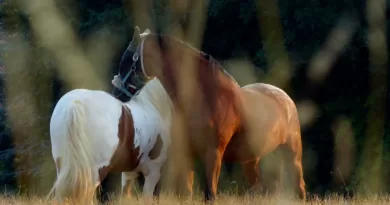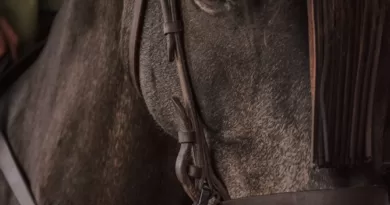Navicular Disease in Horses: Signs Causes & Treatment
Suppose you are a horse owner or someone passionate about these majestic animals. One of the biggest worries on your mind is how to keep your horse happy and healthy for as long as possible. The navicular disease can be a very challenging condition that affects many horses throughout their lifetime. But just how long can a horse live with a navicular?
In this blog post, we’ll take an in-depth look at the issue of whether having navicular disease limits the life expectancy of equines, from diagnosis to treatment options and more.
Understanding Navicular Disease and its Symptoms
“Navicular Disease in horses is a common and often misunderstood condition that can cause pain and discomfort for these majestic animals—also known as caudal heel syndrome.”
- It typically affects the navicular bone and surrounding tissue in the horse’s hoof, leading to lameness and difficulty moving.
- Navicular Disease’s most common symptoms include a shortened stride, reluctance to move or bear weight on the affected limb, and difficulty turning.
- While it can be challenging to treat, early detection and diligent care can help manage symptoms and keep horses comfortable and able to perform their best.
- Understanding the complexities of Navicular Disease is a crucial step in improving equine health and welfare.
Diagnosing and Treating Navicular Disease in Horses
Navicular Disease in Horses is a condition that affects the navicular bone, causing pain and lameness in the affected horse. Diagnosing this disease can sometimes be challenging, as symptoms often vary from horse to horse.
However, with the help of advanced imaging technologies. Such as MRI and ultrasonography, veterinarians can now accurately diagnose Navicular Disease in Horses. Once a diagnosis is made, several treatment options are available, including corrective shoeing, medication, and surgery.
Early detection and treatment are vital to successfully managing this disease as it can improve the affected horse’s quality of life. With proper care and treatment, horses with Navicular Disease can live long, healthy, and active lives.

Early Signs of Navicular in Horses
Navicular Disease in Horses is a condition that affects the navicular bone, causing it to become inflamed and eventually damaged. Early detection is critical in managing the disease because treating it can be challenging once it advances. Some initial warning signs of navicular disease in horses include lameness and a reluctance to run or jump.
Horses may also have shortened strides and tend to stumble or trip often. As a responsible horse owner, monitoring your horse’s behavior and immediately addressing any signs of discomfort to prevent further damage is essential. With proper care and attention, horses with navicular disease can still lead fulfilling lives.
Treatment of Navicular Disease in Horses
Discover Effective Treatment Options for Navicular Lameness in Horses
- Previously, “navicular” was a catch-all for undetermined front-end lameness.
- However, now there are various treatment options available to help your horse get back to optimal health.
- Alongside traditional options like Isoxsuprine and corrective shoeing, you can also consider alternative therapies such as work and rest protocols, pain management with NSAIDs, shockwave, bisphosphonate, and nutraceuticals recommended by your horse’s trusted vet.
- Don’t let navicular lameness hold back your horse’s performance any longer.
What is a Bisphosphonate?
Discover the Power of Bisphosphonates: Beneficial Medications for Humans and Horses.
While bisphosphonates have been utilized in human medicine to limit bone loss for years, they’ve only recently been introduced into the equine market. These medications offer a solution for diseased bone, allowing them to attach to active sites and impede its regrowth. Shockingly, bisphosphonates were originally crafted as industrial chemicals to prohibit corrosion.
Meet Dr. Laura Werner, a highly experienced field care veterinarian, and surgeon at Hagyard Equine Medical Institute. She’s been relying on Osphos, the innovative navicular treatment, since 2014 and has seen remarkable results. Before Osphos, she turned to other methods like Tildren, corrective shoeing, joint/navicular bursa injections, isoxsuprine, shockwave therapy, and anti-inflammatories to treat this condition. Trust Dr. Werner for top-notch equine care.
“Revitalize your horse’s health with Osphos – the powerful intramuscular injection. In just one treatment, we target three separate sites, including the neck and pectoral muscles, for optimal results. Similar to Tildren, the full impact of Osphos may take up to two months to set in. But don’t worry, it can be re-administered every few months based on clinical signs to maintain your horse’s vitality. Trust Dr. Werner to provide your horse with the best possible care.”
The prognosis for Horses with Navicular Disease. How Long Can They Live with the Condition
Navicular disease is a degenerative condition affecting the navicular bone inside a horse’s hoof, causing significant discomfort and pain while moving around. The severity of the disease varies from horse to horse, but generally, it can be pretty debilitating. The prognosis of this disease is not definitive, and the life expectancy of a horse with navicular disease depends on how advanced the condition is and if it is responding to treatments.
While some horses with navicular disease can live relatively everyday lives, others may require a change in their lifestyle. Such as less physical activity or medical interventions to manage their symptoms. Nonetheless, an essential factor in enhancing a horse’s life with navicular disease is early detection, prompt treatment, and optimal care.
The Best feed for Horses with Navicular
Navicular disease in horses is a painful condition that affects the horse’s hoof. It often leads to lameness and discomfort, making it difficult for horses to move around. As such, horse owners must choose the best feed for their horses with Navicular. A proper diet rich in nutrients and low in sugar can help alleviate the symptoms of navicular disease and promote overall health in horses. Owners can ensure that their equine friends are comfortable and happy by selecting suitable feed for their horses with Navicular.
Minimizing Pain in Horses with Navicular Syndrome
Navicular disease in horses is a significant concern for horse owners and trainers alike. It is a condition that causes pain in the horse’s hoof, which can severely hinder their mobility and performance. The good news is that there are various ways to minimize pain in horses with navicular syndrome, ranging from medication to therapeutic shoeing to exercise programs.
It is essential to work closely with a veterinarian to develop a comprehensive treatment plan that addresses the root cause of the issue rather than just masking the pain. By taking a proactive approach to your horse’s health, you can help them live a happy, pain-free life.

Best Shoes For Accessory navicular syndrome
If you suffer from accessory navicular syndrome, you know that finding the perfect pair of shoes can seem like a never-ending quest. But fear not; the right shoes are out there. And just like how horse owners need to take extra care with the navicular disease in horses, you, too, need to be mindful of your feet. Keeping your foot properly supported is critical, but there are also a few other factors to consider.
Look for shoes with a broader toe box, supportive arches, and good cushioning. And remember that custom orthotics can be a game-changer, so it’s worth consulting with a podiatrist to see the best solution for you. With the right shoes and proper care, you can return to tackling the day without dreading painful feet slowing you down.
Preventive Measures to Help Increase Lifespan of Horses with Navicular
Navicular disease in horses is a debilitating condition that affects their performance and can shorten their lifespan. However, there are preventive measures that can be taken to increase the lifespan of horses with Navicular. One of the most effective preventative measures is proper hoof care. As navicular disease affects the structures within the hoof, it is essential to ensure that the hooves are correctly trimmed and balanced.
Another key preventative measure is nutrition. A balanced diet with appropriate levels of vitamins and minerals is crucial in maintaining the overall health and well-being of a horse with navicular disease.
In addition, working with a veterinarian to create a targeted exercise and training plan can also help prevent further damage and reduce discomfort. Taking proactive steps to address navicular disease can help increase the lifespan of horses and ensure they lead a healthy and pain-free life.
Exercise Programs for Horses with Navicular Syndrome
Navicular syndrome can be debilitating for horses, making walking and participating in physical activities difficult. Thankfully, exercise programs have been designed specifically for horses with navicular syndrome, allowing them to get the exercise they need while minimizing the risk of further damage.
These programs may include stretching, walking, and controlled trotting. The good news is that horses with navicular syndrome can live for years with proper management and treatment. While some may eventually require euthanasia due to the severity of their condition, many horses can live comfortable lives with the proper care and attention. So if you have a horse with navicular syndrome, don’t lose hope – there are ways to help them manage their condition and continue to enjoy life.
Can You Ride a Horse that Has Navicular
Navicular disease is a severe condition in horses that affects their hooves. Many horse owners ask themselves if they can ride a horse that has Navicular. The answer to this question depends on each case. Some horses may be able to ride with the proper care and management, while others may need to rest and recover. When considering whether to ride a horse with Navicular, it is essential to consult with a veterinarian and a farrier who can give you a proper evaluation of the horse’s Condition. While the prognosis for Navicular disease may seem daunting, many horses can live long and happy lives with the proper care and treatment.

When to euthanize a horse with Navicular
Euthanizing a horse is a difficult decision for any horse owner. It becomes even more complicated when it comes to Navicular. Many horse owners ask, “How long can a horse live with Navicular?” Unfortunately, there is no straightforward answer to this question. Some horses can live for many years with the Condition, while others may deteriorate quickly.
The decision of when to euthanize a horse with Navicular should be made individually, considering the severity of the Condition, the quality of life of the horse, and the owner’s ability to provide proper care. Ultimately, the goal should be to provide the horse with the best possible quality of life for as long as possible.
Natural Remedies for Navicular in Horses
Navicular disease is a common ailment among horses and can lead to chronic lameness and discomfort. Natural remedies can help alleviate some of the symptoms associated with this Condition. These remedies include adding turmeric or ginger to your horse’s diet, providing regular exercise to increase blood circulation, and incorporating acupuncture or massage therapy to relieve muscle tension.
While there is no cure for navicular disease, these remedies can improve your horse’s quality of life and potentially prolong its lifespan. It’s essential to consult with your veterinarian before attempting any new treatment options to ensure the safety and well-being of your equine companion.
FAQ’s
What have been your Experiences with Horses who have Navicular Disease?
As a horse lover, interacting with horses with navicular disease has been a challenging and emotional experience. Navicular disease is a progressive and chronic condition of the navicular bone in the hoof, which can lead to severe pain and lameness. Horses with navicular disease require specialized care.
Such as regular farrier visits, treatment with anti-inflammatory medications, and special shoeing techniques to reduce pressure and support the affected area. Unfortunately, there is no cure for navicular disease, and the prognosis varies depending on the severity of the Condition. However, with proper management and treatment, a horse with navicular disease can live a comfortable life for many years, continuing to bring joy and companionship to their owners.
How do you know when to put a horse with a navicular down?
Deciding whether or not to euthanize a horse with navicular disease can be a difficult and emotional decision. Unfortunately, there is no black-and-white answer to this question. Every horse is different, and every case of navicular disease is unique. However, one factor is how long the horse can live with the Condition.
Despite advancements in veterinary medicine, horses with navicular disease may only live for a few years before their Condition becomes too painful to manage. It’s important to discuss this with your veterinarian and decide based on the horse’s overall quality of life.
X-rays of navicular disease in horses
Navicular disease in horses is a debilitating and painful condition that can significantly impact their quality of life. It’s caused by inflammation and degeneration of the navicular bone in the horse’s hoof, leading to lameness and discomfort. X-rays are a valuable tool for diagnosing navicular disease and identifying the extent of damage to the bone. But what horse owners want to know is, how long can a horse with navicular disease live? The answer varies depending on the severity of the Condition and how well it’s managed.
With proper care, some horses can live for many years despite having navicular disease, while others may have to be euthanized due to excessive pain and loss of mobility. With early detection and proper treatment, it’s possible to prolong a horse’s lifespan and improve its quality of life. Still, working closely with a veterinarian and farrier is crucial to managing the condition effectively.
See Also: How long do horses live? Amazing Facts About Horses’ Life
What signs suggest a horse is in too much pain to keep going?
As a horse owner or caregiver, it’s essential to recognize when a horse is in pain. One telltale sign that a horse may struggle is when they start to limp or favour one leg more than the others. Additionally, if a horse hesitates to move or shows a lack of interest in physical activity, it could indicate pain. When dealing with issues surrounding navicular disease. It’s essential to be aware of the signs of pain and intervene as necessary.
While every case is different, it’s estimated that horses can typically live for several years with this Condition, especially if they are given the proper care and treatment. Always listen to your horse and watch for subtle behavioural changes. It could mean a quick recovery and a more severe health issue.
What kind of treatments or medications might help manage the symptoms of Navicular in horses?
Navicular disease in horses is a painful condition affecting the navicular bone and associated structures in a horse’s hoof. Symptoms of this disease include limping, reluctance to move, and difficulty standing for a prolonged period. If left untreated, it can lead to permanent lameness, significantly affecting a horse’s quality of life. There are a variety of treatments and medications that may help manage the symptoms of Navicular disease.
One example is corrective shoeing techniques, which can reduce the strain on the affected bone and supportive structures. Other options may include non-steroidal anti-inflammatory drugs (NSAIDs), corticosteroids, and bisphosphonates. A veterinarian should develop a proper diagnosis and treatment plan to ensure the best care for horses with Navicular disease.
Have you ever seen a horse with a navicular live for many years despite its Condition?
Navicular Disease in Horses can be a devastating diagnosis for any horse owner. This debilitating condition affects the front feet of horses, leaving them with severe and chronic lameness. Despite how scary it might sound, there are many cases where horses live for years with this Condition and continue to thrive in their daily lives.
There is no cure for Navicular Disease, but with proper treatment and management, horses can experience relief from their pain and continue to enjoy a fulfilling life. So, if you ever find yourself in a situation where your horse has been diagnosed with Navicular Disease. Remember, it’s not a death sentence; there’s still hope for a bright future together.




